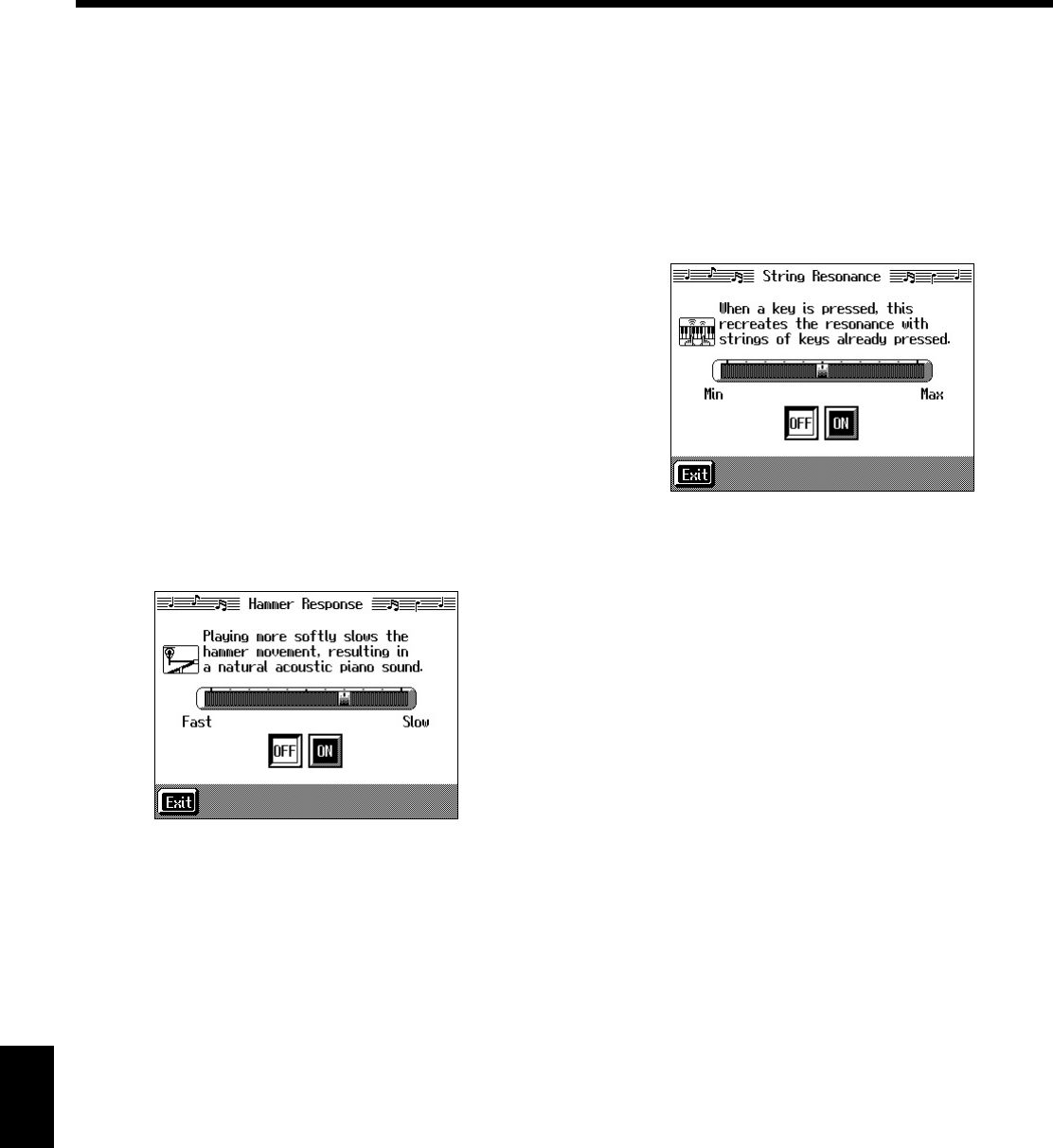
154
Chapter 9 Various Settings
Chapter 9
■
Changing How Rapidly Sounds Are
Expressed According to the Force
Used to Play the Keys
(Hammer Response)
You can adjust the timing with which sounds are produced
according to the force used to play the keys. This function is
called “Hammer Resonance.”
When a key is pressed on an acoustic piano, it causes a
hammer to move and strike the strings, producing sound.
The hammers move more slowly when the keys are played
gently, meaning that sounds are produced just slightly later
than when you play the keyboard with greater force.
When the Hammer Response function is on, the interval
between the time a key is pressed and the time sound is
produced varies according to the force used to play the key.
The more gently the key is pressed, the more delayed the
timing of the sound.
At Step 3 in “Procedure” (p. 152), touch <Hammer
Response>.
fig.d-p-hmreso.eps_50
Touch <ON> to turn the Hammer Response function on.
Touch the screen slider to adjust the time it takes for a key to
sound after it is pressed.
The more the slider is moved to “Slow,” the more delayed
the sound is when the keys are played softly. Conversely,
sounds are produced more quickly when the keys are played
with greater force.
Touch <OFF> to cancel the effect.
■
Adjusting the Resonant Sounds
(String Resonance)
When the keys are pressed on an acoustic piano, the strings
for keys that are already pressed also vibrate
sympathetically. The function used to reproduce this
resonance is called “String Resonance.”
At Step 3 in “Procedure” (p. 152), touch <String Resonance>.
fig.d-p-streso.eps_50
Touch <ON> to turn the String Resonance function on.
Touch the screen slider to adjust the amount of effect
applied.
Moving the slider to “Max” increases the amount of
resonance effect applied. Moving the slider to “Min” reduces
the amount of effect applied.
Touch <OFF> to cancel the effect.
KR-17_15_e.book 154ページ 2004年12月6日 月曜日 午後1時54分


















